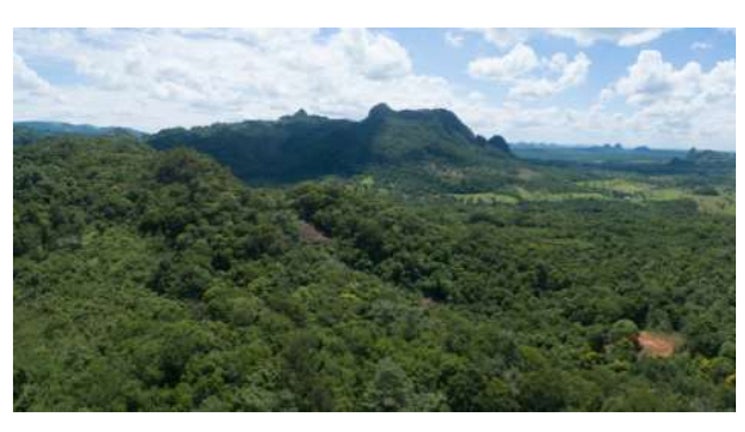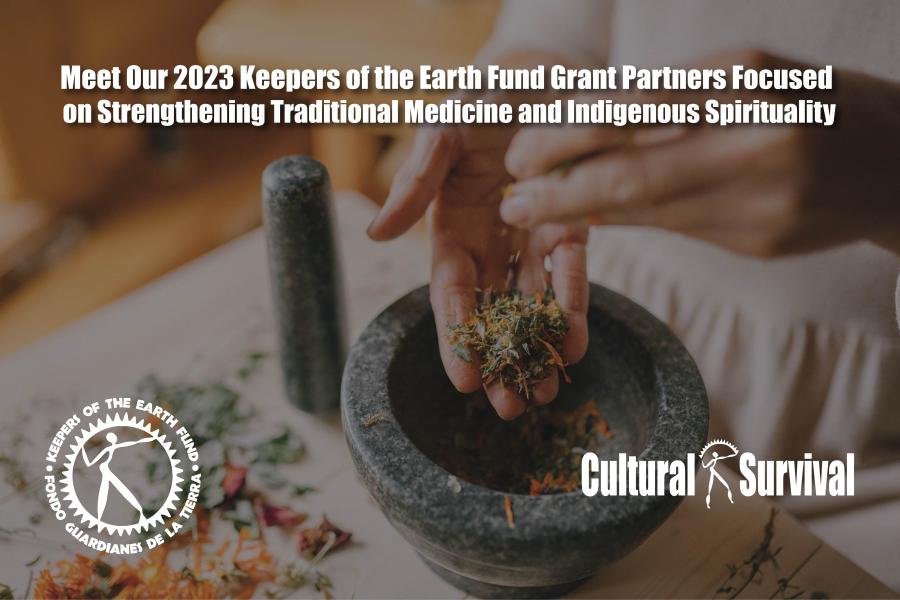
By Rebecca Kirkpatrick (CS Intern)
Today is International Day of Forests. On March 21, 2012, the UN General Assembly proclaimed March 21 as International Day of Forests to celebrate and raise awareness of the importance of all types of forests. Ten thousand years ago 57 percent of the world was covered by forests, over 6 billion hectares. Today, only 4 billion hectares are left. The world has lost one-third of its forest – an area about twice the size of the United States. Globally we lose around ten million hectares of forest every year to deforestation, and nearly all, 95 percent, of this deforestation occurs in the tropics.
Cultural Survival is taking the opportunity to recognize a few Keepers of the Earth Fund grant partners who are working tirelessly to protect, preserve, and raise awareness about forests and their importance in our daily lives.
Consejo de Autoridades Indígenas para la Protección de los Recursos Naturales, RA’LWA’LULEU (Maya K’iche’), Guatemala
With the help of the Keepers of the Earth Fund, the Maya K’iche’ community of San Pedro Jocopilas in Quiche, Guatemala, have been able to purchase the supplies and labor necessary to kickstart their life-long project of caring for and maintaining their local forests and biodiversity. The funding allowed the self-proclaimed “guardians of the community forests” to create community nurseries, hold clean-up days in the forest, and promote reforestation campaigns at the municipal and departmental levels.
Asociación de Comunidades Paĩ Tavyterã Paĩ Retã Joaju (Guaraní), Paraguay

Community meeting about post-frost boundary care.
In Paraguay, the Paĩ Reta Joaju association of Indigenous communities, which formed 31 years ago to defend and reclaim their ancestral lands and territories and protect their knowledge, used the Keepers of the Earth Fund grant to help them protect and preserve their local forest and Jasuka Venda Hill, which is considered to be the origin place of the earth and the reason for the existence of the Paĩ Tavyterã people. The project was carried out in the Jasuka Venda territory, which covers approximately 8,000 hectares with various ecosystems, plant formations, and native species of flora and fauna. The territory has a tendency to be a fairly tense place; the access roads are precarious and can only be accessed via cattle ranches, there is almost no telephone signal, and the area is surrounded by large tracts of highly deforested and eroding commodity cattle ranches. The community has managed to reforest most of the territory as they’ve reclaimed and recovered the land, but tensions remain high with landowners and cattle ranchers who want the land for themselves. The tension in the area has only increased thanks to the militarization of the area and its surroundings by the Paraguayan State in search of a clandestine paramilitary group. This militarization poses a major threat to the local Indigenous communities. The purpose of the project was to protect the territory’s boundaries, springs, and the reserve, as well as increase the presence of Indigenous men and women from different communities through reforestation and care of biodiversity, boundaries, and water sources.

Jasuka Venda Territory.
Federación de Organizaciones Indígenas y Campesinas del Azuay (Kañaris), Paraguay
In Kimsakocha, Paraguay, the Kañaris Peoples of Azuay have used the Keepers of the Earth Fund grant to help them carry out six agroecological training sessions with ten farmers in the area. The purpose of this was to train farmers capable of changing their conventional (agrochemical) productive matrix for an agricultural practice focused on understanding and using materials from their environment and create a community that is able to practice good agriculture, ensuring highly nutritious food that is free of pesticides and that will improve the health of community members. Agroecology allows small plots to cultivate a variety of products that help communities to recover food sovereignty, which has been hugely beneficial to community health during the global pandemic. “This project is very important for the water defenders of Kimsakocha because it allows us to build an alternative to extractivism, taking care of the elements of life such as land, water, moorland, forests, and all our species that have been degraded by monocultures and mining,” said one community member. “During the last few years, due to the pandemic, the lack of employment, the extractivism, the environmental deterioration from monocultures, we talk about ‘returning our eyes to the field’ as a phrase that reminds us of the need to work on the land, recovering our ancestral knowledge, respecting the lunar cycles, the ceremonies, and offerings in the planting, the gratitude to our Pachamama, but above all respecting the life of all beings and plants that are a fundamental part of life.”
Yurok Tribe Environmental Program (YTEP) Food Sovereignty Division
In northern California, the Yurok Tribe community is using a KOEF grant to create a burn candidate map, which will help in the community’s efforts to revitalize cultural burning for the restoration of tanoak groves. It will help inform long-term land management planning, which will, in turn, encourage traditional food production. The creation of this map is essentially a first step in the community’s large-scale food system restoration project through cultural burning. Research conducted by the Klamath Basin Tribal Food Security Project found that 55.56 percent of Yurok households experienced very low food security, and an average of 27.43 percent of respondents rarely or never had access to healthy foods. This issue was further exacerbated by the COVID-19 pandemic. “The COVID-19 pandemic demonstrated that the Yurok Reservation is not and will not be a priority when food and supply systems are stressed,” stated one member of the community. “This project is one of many initiatives to help the Yurok Tribe regain total food sovereignty and not be reliant on outside systems to supply healthy food to its people.” The Yurok People have relied heavily on the salmon in the Klamath River for sustenance, but climate change has caused the number of salmon in the river to decrease significantly, and the community must now rely primarily on other traditional food sources such as acorns, huckleberries, tanoak mushrooms, and hazelnuts, all of which will benefit from the cultural burning of the tanoak groves.
On this International Day of Forests and every day, it’s important to remember the key role that forests play in our daily lives and recognize those Indigenous communities who are working so hard to protect them and their biodiversity.
Keepers of the Earth Fund (KOEF) is an Indigenous Led Fund within Cultural Survival designed to support Indigenous Peoples’ community development and advocacy projects. Since 2017, through small grants and technical assistance, KOEF has supported 182 projects in 36 countries totaling $791,838. KOEF provides, on average, $5,000 grants to grassroots Indigenous-led communities, organizations, and traditional governments to support their self-determined development projects based on their Indigenous values. Predicated on the United Nations Declaration on the Rights of Indigenous Peoples, Cultural Survival uses a rights-based approach in our grantmaking strategies to support grassroots Indigenous solutions through the equitable distribution of resources to Indigenous communities.



